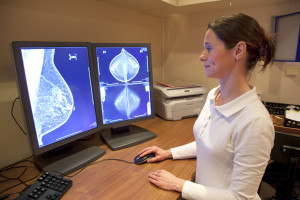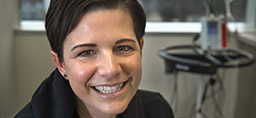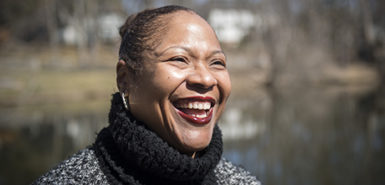
The percentage of women with early stage breast cancer who choose to have the breast-conserving surgery known as lumpectomy has risen slowly in recent years, new research shows.
In 1998, slightly more than 54 percent of eligible women chose the surgery. But, the number had passed the 60 percent mark by 2011, according to study author Dr. Isabelle Bedrosian, an associate professor of surgical oncology at the University of Texas M.D. Anderson Cancer Center in Houston.
“The big picture shows most women with early stage breast cancer are opting for breast-conserving surgery,” she said.
Previous research has found that mastectomy, where the entire breast is removed, was chosen as often as lumpectomy among women with early stage breast cancer who were candidates for lumpectomy and the radiation that typically follows it.
Bedrosian views the new findings as good news, but emphasized that barriers still exist. Among them are lack of insurance and the distance some patients must travel to treatment facilities.
Most women who choose breast-conserving surgery also need whole-breast radiation, which is typically given in daily fractions over a six-week period. Some women lack transportation or can’t take a break from work or family responsibilities to do that, the researchers explained.
Our Take
“Treatment for breast cancer continues to evolve to allow women more options in order to make educated personal choices about their care,” said Jayne Paulson, MD, FACS, a breast surgeon with Spectrum Health Medical Group.
Dr. Paulson said women are choosing breast-conserving treatments more often due to an increase in access, education and treatment options available such as radiation and lymph node surgery.
Transportation has also become less of a barrier for patients as many hospital systems, including Spectrum Health, expand access with satellite treatment facilities where patients get comprehensive care closer to home. Patients may meet with all their treating physicians in one visit thanks to breast multispecialty clinics.
Women also have more choices than ever before thanks to research and improved data and treatment techniques.
“We, as physicians, are becoming better educators,” Dr. Paulson said. “We can now give outcome data to our patients. This allows them to make a better educated choice and hopefully remove some of the fear surrounding their diagnosis and treatment.”
Doctors have also seen changes in how they address lymph node sampling with the release of groundbreaking trial data. Women choosing breast-conserving surgery who will receive whole-breast radiation may not require additional lymph node removal if they have a positive sentinel lymph node at the time of their surgery. There are also shorter radiation protocols and some evidence that not all women need radiation after breast-conserving surgery.
The study was published online June 17 in the journal JAMA Surgery.
The new study draws from a database that’s more complete than those used in other research, Bedrosian said. Her team looked at data on women treated for early stage breast cancer between 1998 and 2011. All were entered into the National Cancer Data Base, sponsored by the American College of Surgeons and the American Cancer Society. It captures about 70 percent of newly diagnosed cancer cases in the United States, the study authors said.
The researchers looked at factors that influenced the surgery decision made by nearly 728,000 women. The investigators found that the decision to have breast-conserving surgery was more likely in women aged 52 to 61 compared to younger women.
Women with higher education were also more likely to have a lumpectomy. In addition, those without insurance were less likely to opt for breast-conserving surgery than those with private insurance. Lower-income women were also less likely to choose lumpectomy, the study found.
Bedrosian said it’s important to address the remaining barriers so women who are eligible and want breast-conserving surgery can get it.
Dr. Lisa Newman, a professor of surgery at the University of Michigan Comprehensive Cancer Center in Ann Arbor, wrote an accompanying journal editorial. She said, “Breast-conservation rates may well continue to rise as women become better-informed regarding its safety and as we become more successful with early detection of breast cancer, when lumpectomy is more likely to be feasible.”
Women making the decision about early stage breast cancer surgery should also know they are not “racing the clock,” although it is important to get treatment in a timely manner, she added.
“Most newly diagnosed breast cancer patients will have treatment options, and they need to take some time to inform themselves about these choices so that they select the approach that suits them best,” Newman said.
Are women who are still choosing mastectomy over lumpectomy possibly influenced by the decision of actress and activist Angelina Jolie to have a preventive double mastectomy when she found out she had a genetic mutation that greatly increased her risk of breast cancer?
Newman believes Jolie’s decision and her discussion of it publicly “was a powerful public education message regarding the importance of knowing your family history and pursuing genetic counseling when appropriate. A variety of strategies are available to women for early detection and even prevention of breast cancer, but an important first step is to understand which options are reasonable for each patient as an individual.”
 /a>
/a>
 /a>
/a>
 /a>
/a>